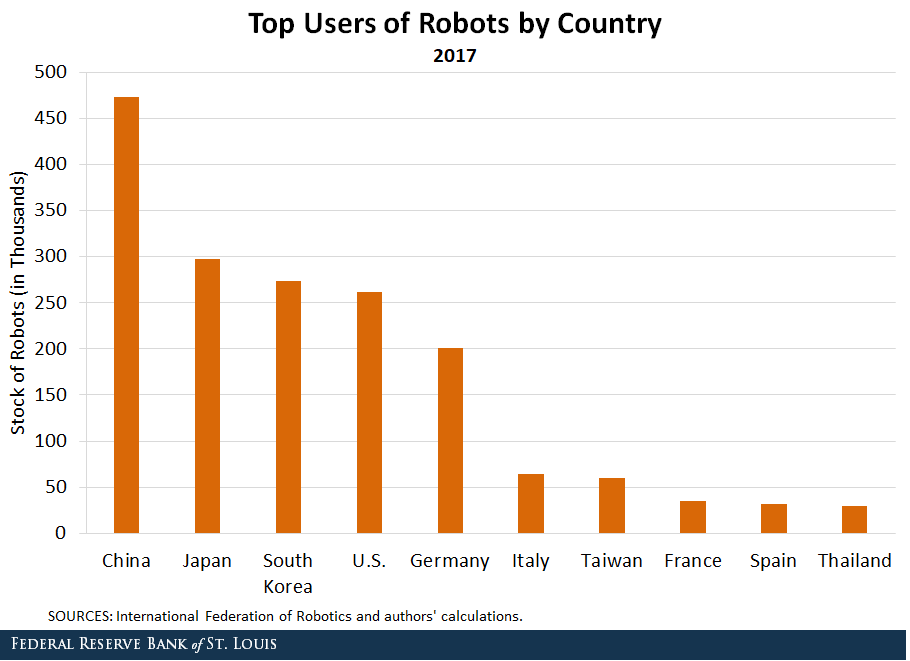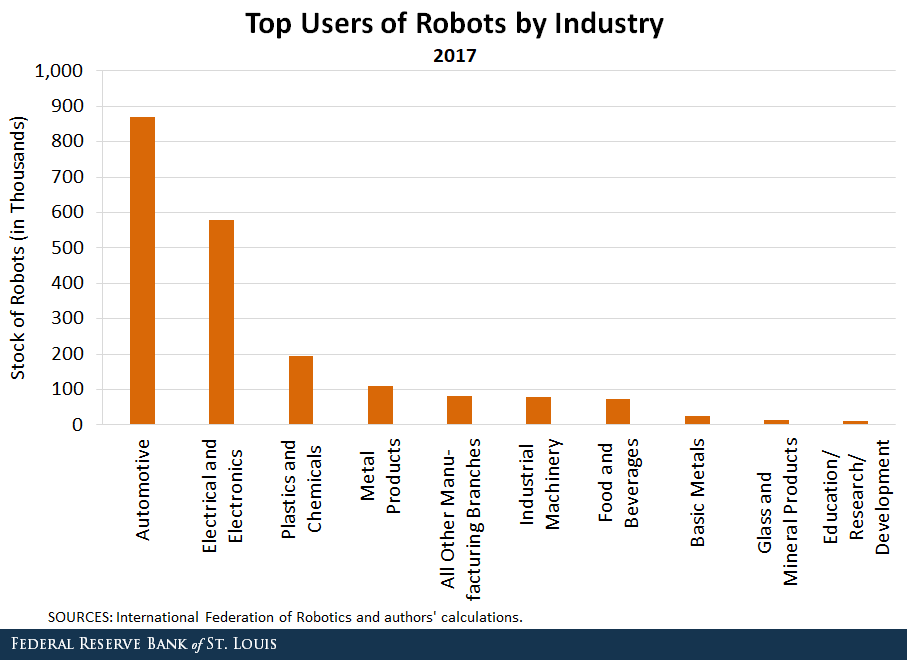In 2017, nearly 2 million industrial robots were in use around the world, up nearly 280% since 1993. The use of robots has more than doubled in the last 20 years in most advanced economies. The top users of industrial robots in 2017 were China, Japan, and South Korea, using nearly 50% of the world’s stock of robots. European nations were also significant users of industrial robots in 2017, with Germany employing around 200,000 robots.

Regarding industries, the highest usage of industrial robots in 2017 belonged to the automotive industry - which employed about 42% of all robots - followed by the electrical and electronics industry at 28%.*

Thus, industries around the world are adopting robots at a rapid pace. It is natural, then, to wonder about the impact on the labor market. While there is no definitive answer, one way to think about this is by looking at the effects of robots on employment, specifically routine manual employment.
Routine occupations - including manual occupations like construction and transportation and cognitive occupations like sales and office occupations - are most susceptible to automation, and economists often cite automation as one of the causes for “job polarization."[2]
In a recent article, we examined the implications of automation for local labor markets in the U.S.[3] We found that the larger increase in the use of robots in some areas may be reducing the number of people employed in routine manual occupations relative to areas with a smaller increase in the use of robots.
While our earlier analysis gives us an idea about the local effects of automation on employment, it would be interesting to address the aggregate effects of industrial robots in future work.
No comments:
Post a Comment